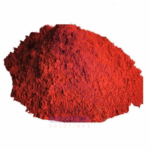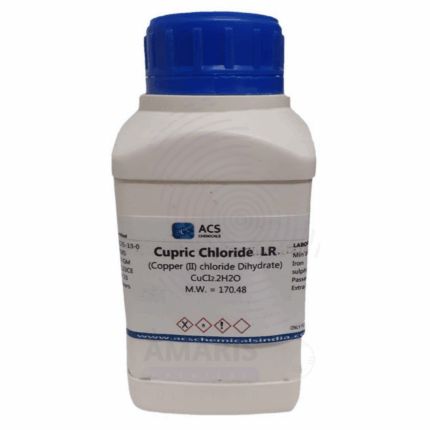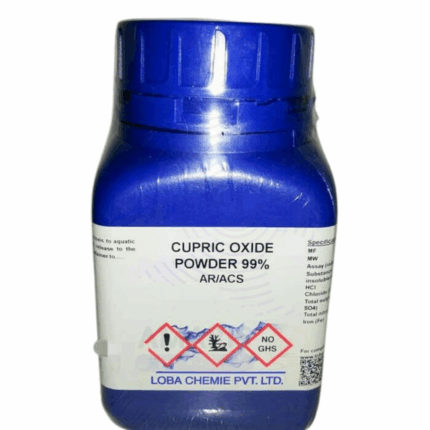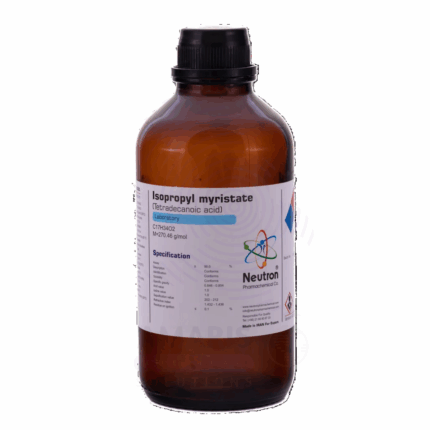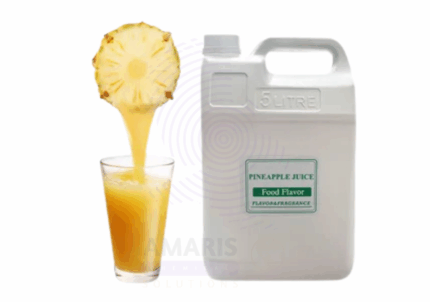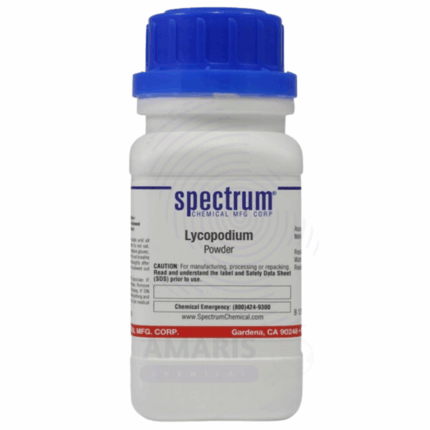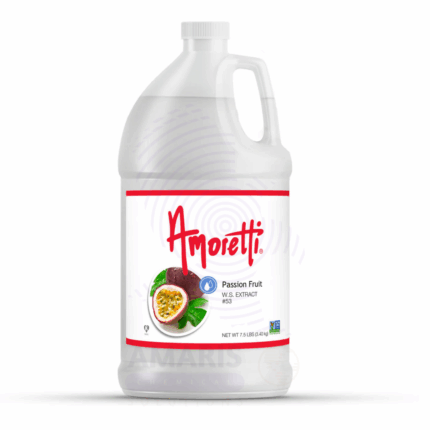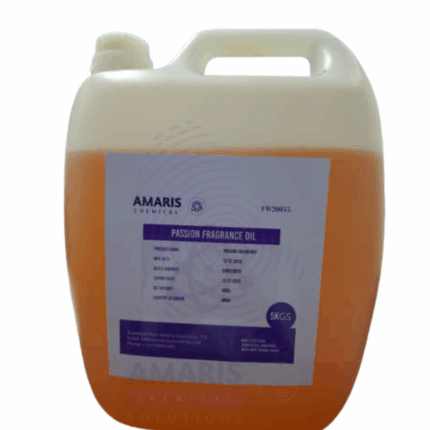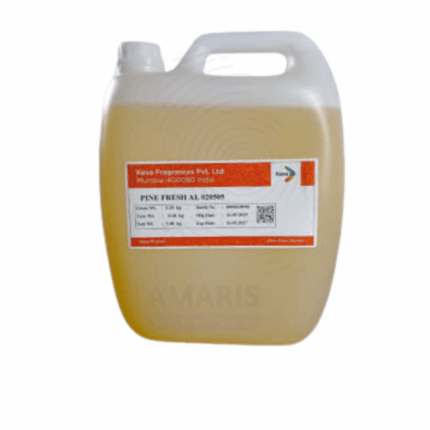Immersion Oil
Whatsapp Order
Immersion Oil is a high-purity, optically transparent oil used primarily in microscopy to enhance the resolution of high-power objectives. Applied between the microscope objective lens and the cover glass, immersion oil reduces light refraction and increases numerical aperture, allowing for clearer and more detailed imaging. It is colorless, non-drying, and has a refractive index closely matching that of glass (typically around 1.515).
This 50ml volume is ideal for laboratory, clinical, and educational settings where precision microscopy work is performed. Immersion oil is formulated to be chemically stable, non-drying, and safe for delicate optics when used correctly.
Description
Table of Contents
Toggle
Immersion Oil
Primary Uses
- Laboratory and Scientific Applications
- Used with high-magnification (usually 100x or higher) oil-immersion microscope objectives.
- Reduces light refraction between slide and objective lens for enhanced image clarity.
- Essential in biological, medical, and pathology labs for detailed cell and tissue visualization.
- Applied in educational institutions for advanced biological microscopy demonstrations.
- Common in industrial inspection of fine materials, electronics, or metallurgical specimens.
Secondary Uses
- Optical Equipment Maintenance
- Occasionally used in calibration or testing of optical systems where refractive index matching is required (under expert supervision).
KEY PRODUCT FEATURES
1. Basic Identification Attributes
- Common/Trade Name: Immersion Oil
- CAS Number: 8042-47-5 (for mineral-oil-based formulations)
- Refractive Index: ~1.515 at 23°C
- HS Code: 3824.99
- Synonyms: Microscopy Oil, Oil for Immersion Objectives
2. Physical & Chemical Properties
- Physical State: Clear, colorless liquid
- Odor: Odorless or very mild hydrocarbon scent
- Viscosity: Medium to high, depending on formulation
- Solubility: Insoluble in water
- Compatibility: Glass and most optical lenses (verify lens coating safety)
- Volatility: Low; non-drying
3. Safety & Hazard Attributes
- GHS Classification: Not classified as hazardous under normal use
- Toxicity: Low; not intended for ingestion or inhalation
- Allergen Information: No known allergens in standard formulations
- Flash Point: > 150°C (varies by formulation)
4. Storage & Handling Attributes
- Storage Conditions: Store tightly sealed in a cool, dry, dust-free place
- Container Type: Amber glass or opaque plastic to avoid UV degradation
- Shelf Life: 3–5 years under ideal storage conditions
- Handling Precautions: Avoid contamination and exposure to air when not in use
5. Regulatory & Compliance Attributes
- Complies with ISO standards for immersion microscopy
- Produced in ISO or GMP-certified facilities
- Non-reactive and safe for use with most optical instruments
- Not intended for food, pharmaceutical, or cosmetic use
6. Environmental & Health Impact
- Biodegradability: Partially biodegradable depending on formulation
- Ecotoxicity: Low when used and disposed of properly
- Bioaccumulation: Not expected in normal use scenarios
SAFETY HANDLING PRECAUTIONS
Safety Handling Precautions
- PPE Required: Gloves and lab coat recommended during prolonged handling
- Handling Guidelines: Use dropper or applicator; avoid spills on microscope parts
First Aid Measures
- Inhalation: Move to fresh air; unlikely to pose risk
- Skin Contact: Wash with soap and water if contact occurs
- Eye Contact: Rinse gently with clean water
- Ingestion: Seek medical attention; not meant for internal use
Firefighting Measures
- Fire Hazards: Slightly flammable at high temperatures
- Extinguishing Media: CO₂, dry chemical, or foam
- Special Precautions: Avoid using water jet directly on burning oil
- Hazardous Combustion Products: Carbon monoxide, carbon dioxide
Related products
Cupric Chloride Extra Pure
Cupric Chloride Extra Pure is a green to yellowish crystalline compound widely used in laboratories as a catalyst, reagent, and source of copper ions in various chemical reactions. It plays a key role in organic synthesis, photochemical processes, and analytical chemistry procedures, especially for detecting reducing agents and halide ions. Its high solubility in water and alcohol allows for versatile application across wet-lab experiments. The extra pure grade ensures excellent reliability and minimal impurities, making it ideal for precision work in research and education. Store in a cool, dry place, protected from moisture and light to preserve its reactivity.
Cupric Oxide Extra Pure
Cupric Oxide Extra Pure is a black, fine powder extensively used in laboratory settings as a stable, high-purity source of copper in oxidation state +2. It is commonly applied in organic synthesis, inorganic reactions, and thermal decomposition studies, as well as in qualitative and quantitative analysis of copper. Its thermal stability also makes it suitable for ceramic glazing and as a precursor in catalyst preparation. This extra pure grade ensures low impurity levels, essential for accurate experimental results and reproducible data in both educational and research laboratories. It should be stored in a tightly sealed container away from moisture and strong acids.
Isopropyl Myristate Extra Pure
Isopropyl Myristate Extra Pure is a high-purity ester derived from isopropyl alcohol and myristic acid, commonly used for its excellent solvent and emollient properties. It appears as a colorless to slightly yellow, oily liquid with a faint odor. In laboratory and cosmetic settings, it serves as a solvent and carrier for active ingredients, particularly in topical formulations, where it enhances skin absorption without leaving a greasy residue. Its purity makes it suitable for precise formulation work in pharmaceutical, cosmetic, and personal care research. Isopropyl Myristate is also used in the preparation of perfumes and as a penetration enhancer in transdermal drug delivery systems.
Liquid Pineapple Flavor
Liquid Pineapple Flavor (Food Grade) is a high-quality, natural and synthetic flavoring agent designed to capture the sweet, tangy, and refreshing taste of ripe pineapple. Widely used in the food and beverage industry, this flavor enhances a variety of products such as soft drinks, juices, confectionery, dairy, and baked goods. It is water and alcohol soluble, providing versatility in formulation. Its vibrant tropical aroma and authentic pineapple taste help create appealing and flavorful consumer products.
Lycopodium Powder Extra Pure
Lycopodium Powder Extra Pure is a fine, yellowish powder derived from the spores of club moss plants, prized for its exceptional purity and versatility in both scientific and industrial applications. In laboratories, it is frequently used to demonstrate Brownian motion, study spore dispersion, or simulate particulate flow in airflow experiments. Due to its high flammability, Lycopodium powder also serves as a dramatic visual aid in physics demonstrations involving flame propagation or combustion. Outside the lab, it has niche applications in pharmaceuticals, cosmetics, and even pyrotechnics. It should be handled with care and stored in a dry, cool, and non-igniting environment.
Passion Fragrance Water Soluble
Passion Fragrance Water Soluble is a fresh and vibrant fragrance designed to deliver the sweet, tropical aroma of passion fruit in water-based formulations. Its excellent solubility in water makes it ideal for use in a variety of cosmetic, personal care, and household products such as body sprays, lotions, shampoos, and air fresheners. This fragrance oil is formulated to maintain scent stability and longevity in aqueous systems while providing a clean, refreshing tropical note. Manufactured under strict quality standards, it ensures consistent performance and safety for various applications.
Passion Fruit Fragrance Oil
Passion Fruit Fragrance Oil is a vibrant, richly scented oil delivering the sweet, exotic aroma of ripe passion fruit. Ideal for enhancing personal care products, perfumes, and home fragrances, this fragrance oil provides a long-lasting, fresh tropical scent. It is crafted to blend smoothly into oil-based and solvent-based formulations, ensuring consistent fragrance delivery. Manufactured under stringent quality controls, Passion Fruit Fragrance Oil adds a luxurious and refreshing note to a wide range of applications.
Unipine Fragrance Water Soluble
Unipine Fragrance Water Soluble is a fresh, crisp, pine-based aromatic compound formulated for use in water-based systems. It replicates the clean, invigorating scent of pine forests with subtle herbal and woody undertones, making it a popular choice in air fresheners, cleaning agents, and personal care formulations. Its water-soluble nature allows for easy incorporation into aqueous products without the need for emulsifiers, ensuring even fragrance dispersion and stability. Unipine fragrance offers excellent performance in both homecare and hygiene applications where a natural, clean aroma is desired.


 Preservatives(food)
Preservatives(food) Flavor Enhancers
Flavor Enhancers Acidulants
Acidulants Sweeteners
Sweeteners Antioxidants
Antioxidants Colorants(food)
Colorants(food) Nutraceutical Ingredients (food)
Nutraceutical Ingredients (food) Nutrient Supplements
Nutrient Supplements Emulsifiers
Emulsifiers
 Collectors
Collectors Dust Suppressants
Dust Suppressants Explosives and Blasting Agents
Explosives and Blasting Agents Flocculants and Coagulants
Flocculants and Coagulants Frothers
Frothers Leaching Agents
Leaching Agents pH Modifiers
pH Modifiers Precious Metal Extraction Agents
Precious Metal Extraction Agents
 Antioxidants(plastic)
Antioxidants(plastic) Colorants (Pigments, Dyes)
Colorants (Pigments, Dyes) Fillers and Reinforcements
Fillers and Reinforcements Flame Retardants
Flame Retardants Monomers
Monomers Plasticizers
Plasticizers Polymerization Initiators
Polymerization Initiators Stabilizers (UV, Heat)
Stabilizers (UV, Heat)
 Antifoaming Agents
Antifoaming Agents Chelating Agents
Chelating Agents Coagulants and Flocculants
Coagulants and Flocculants Corrosion Inhibitors
Corrosion Inhibitors Disinfectants and Biocides
Disinfectants and Biocides Oxidizing Agents
Oxidizing Agents pH Adjusters
pH Adjusters Scale Inhibitors( water)
Scale Inhibitors( water)
 Antioxidants(cosmetic)
Antioxidants(cosmetic) Emollients
Emollients Fragrances and Essential Oils
Fragrances and Essential Oils Humectants
Humectants Preservatives
Preservatives Surfactants(cosmetic)
Surfactants(cosmetic) Thickeners
Thickeners UV Filters
UV Filters
 Fertilizers
Fertilizers Soil Conditioners
Soil Conditioners Plant Growth Regulators
Plant Growth Regulators Animal Feed Additives
Animal Feed Additives Biostimulants
Biostimulants Pesticides (Herbicides, Insecticides, Fungicides)
Pesticides (Herbicides, Insecticides, Fungicides)
 Active Pharmaceutical Ingredients (APIs)
Active Pharmaceutical Ingredients (APIs) Excipients
Excipients Solvents(pharmaceutical)
Solvents(pharmaceutical) Antibiotics
Antibiotics Antiseptics and Disinfectants
Antiseptics and Disinfectants Vaccine Adjuvants
Vaccine Adjuvants Nutraceutical Ingredients (pharmaceutical)
Nutraceutical Ingredients (pharmaceutical) Analgesics & Antipyretics
Analgesics & Antipyretics
 Analytical Reagents
Analytical Reagents Solvents(lab)
Solvents(lab) Chromatography Chemicals
Chromatography Chemicals Spectroscopy Reagents
Spectroscopy Reagents microbiology-and-cell-culture-reagents
microbiology-and-cell-culture-reagents Molecular Biology Reagents
Molecular Biology Reagents Biochemical Reagents
Biochemical Reagents Inorganic and Organic Standards
Inorganic and Organic Standards Laboratory Safety Chemicals
Laboratory Safety Chemicals Specialty Laboratory Chemicals(Special Laboratory Equipment)
Specialty Laboratory Chemicals(Special Laboratory Equipment)
 Demulsifiers
Demulsifiers Hydraulic Fracturing Fluids
Hydraulic Fracturing Fluids Scale Inhibitors(oil)
Scale Inhibitors(oil) Surfactants(oil)
Surfactants(oil) Drilling Fluids
Drilling Fluids
 Dyes and Pigments
Dyes and Pigments Bleaching Agents
Bleaching Agents Softening Agents
Softening Agents Finishing Agents
Finishing Agents Antistatic Agents
Antistatic Agents
 Admixtures
Admixtures Waterproofing Agents
Waterproofing Agents Sealants and Adhesives
Sealants and Adhesives Curing Compounds
Curing Compounds Concrete Repair Chemicals
Concrete Repair Chemicals Anti-Corrosion Coatings
Anti-Corrosion Coatings
 Surfactants(cleaning)
Surfactants(cleaning) Builders
Builders Enzymes
Enzymes Solvents (Cleaning)
Solvents (Cleaning) Fragrances
Fragrances
 Electronic Chemicals
Electronic Chemicals Catalysts
Catalysts Lubricants
Lubricants Photographic Chemicals
Photographic Chemicals Refrigerants
Refrigerants Automotive chemicals
Automotive chemicals Pyrotechnic Chemicals
Pyrotechnic Chemicals
 Biodegradable Surfactants
Biodegradable Surfactants Bio-based Solvents
Bio-based Solvents Renewable Polymers
Renewable Polymers Carbon Capture Chemicals
Carbon Capture Chemicals Wastewater Treatment Chemicals
Wastewater Treatment Chemicals
 Pigments
Pigments Solvents(paint)
Solvents(paint) Specialty Coatings
Specialty Coatings Binders/Resins
Binders/Resins Additives
Additives Driers
Driers Anti-Corrosion Agents
Anti-Corrosion Agents Functional Coatings
Functional Coatings Application-Specific Coatings
Application-Specific Coatings
 Fresh Herbs
Fresh Herbs Ground Spices
Ground Spices Whole Spices
Whole Spices Spice Blends
Spice Blends Dried Herbs
Dried Herbs
 Leavening Agents
Leavening Agents Dough Conditioners
Dough Conditioners Flour Treatments
Flour Treatments Fat Replacers
Fat Replacers Decoratives
Decoratives Preservatives(baking)
Preservatives(baking)
 Plasticizers & Softeners
Plasticizers & Softeners Reinforcing Agents
Reinforcing Agents Adhesion Promoters
Adhesion Promoters Vulcanizing Agents
Vulcanizing Agents Antidegradants
Antidegradants Blowing Agents
Blowing Agents Fillers & Extenders
Fillers & Extenders Accelerators & Retarders
Accelerators & Retarders

